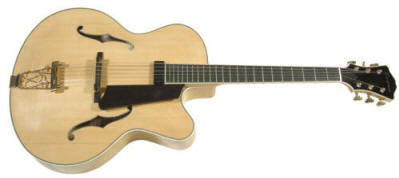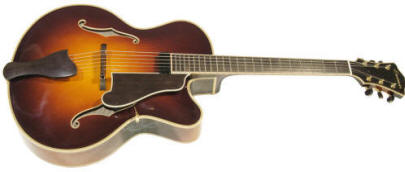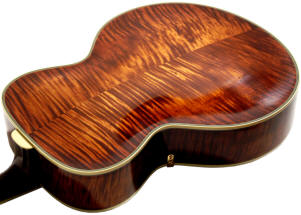Eastman Strings is an
integral part of the long and glorious history of one of the most
fascinating musical traditions the world has known. Through their
violin and bow making activities, Eastman Stringed Instruments
are attached to a tradition nearly 500 years old, and they strive to
maintain a level of artistic and commercial achievement worthy of
their predecessors.
The history of the violin family is fascinating and complex. It has
all the elements of a great story, and our place in that story tells
a lot about how we view the importance of what we do. There are many
books and websites that offer extensive information and speculation
about the history of violinmaking, and it is not our goal to repeat
all of this information here. Let it suffice for us to pick up the
story in the late 19th century, when economic and social factors
came into play to influence the art of violin making and bring it
into the modern age.
In the mid to late 1800's, the industrial revolution was well under
way, bringing with it a rise of urban culture, increase in buying
power for the middle class, and expansion of international trade. A
generation of comparatively well-educated and affluent people turned
its interest to music making, many as a pastime, and others as a
vocation. No longer merely the entertainment of the noble and
wealthy classes, classical and various forms of popular and folk
music were embraced by ordinary people, and they wanted not only to
hear it, but to play it themselves. Several different types of
instruments grew in popularity—both mechanical devices such as
player pianos, music boxes of ingenious designs, and other basically
self-playing instruments, and more traditional instruments such as
pianos, harmoniums, and violins. The violin in particular was the
instrument of choice for more amateur and professional musicians
than any other.

Imagine the fficulty of would-be music makers who were faced with a
severe shortage of instruments on which to play. The great master
instruments of the 17th and 18th centuries were already collectible
and unaffordable by this time, and modern instruments were also
relatively rare and expensive. Several savvy violin makers figured
out a solution: they created master workshops where they trained
specialist wood carvers to do much of the time consuming work of
violin making for them. The masters trained the workers, oversaw
their work, and participated in the assembly and varnishing of the
instruments. By putting much of the work in the hands of specialized
workers who were not highly-paid masters, they were able to create
high quality hand-made instruments at reasonable cost. As a result,
violins were both available and affordable to musicians who lacked
the budgets to buy vintage instruments, but who nevertheless wanted
good quality violins on which to play. It sounds obvious to us now,
but it was a major change for both violin making and for the world
of music in general. In former generations, only a small caste of
professional musicians, working primarily for the European courts
and churches, were able to play instruments (which were often
provided by their employers). Now, nearly anyone could acquire a
hand-made violin or guitar and learn to make music.
Violins & Guitars became both available and affordable
to musicians who wanted good quality
instruments on which to play.
All of this was important not only for the
future of instrument making, but also for music in general. Think of
the creative power, not to mention the surge in popularity of music,
that resulted from increased access to the instruments on which this
music is made!
During this period, which lasted from the late 19th century until
the middle of the 20th, hand-made violins and bows were available in
a wide range of qualities and prices. The least expensive were
really quite awful, but they served their purpose. Sears Roebuck and
Montgomery Ward sold cheap outfits in their catalogs, while fine
violin shops sold the better workshop instruments and bows, often
relabeling them with their shop name, or with incorrect or
fictitious maker’s labels. (Many a person, when cleaning out a
closet or attic, has been thrilled by the discovery of a violin by
the great Cremonese master Stradivarius. Thinking that they have
made their fortunes, nearly all of these people are later
disappointed to learn that the instruments they possess are
inexpensive German or Czech copies with facsimile Stradivarius
labels. The origin of the “attic Strad” is found in the practice of
many makers who put cheaply printed Stradivari labels in their
export instruments.)

European workshops continued to hand-make instruments and
bows up until the middle of the 20th century. Though it is far from
the greatest tragedy resulting from World War II, the war brought
about major changes in the business of violin making. Many violin
makers were killed in the violence. Workshops were destroyed, as
were entire towns. Europe itself was rearranged in the aftermath of
the war. These facts combined to completely alter violin making in
the late 20th century. First, many of the German makers who had been
living in the German areas of Czechoslovakia, at one time major
producers of instruments, found themselves no longer welcome in
their former hometowns. They were evicted from their homes and
workshops and forced to emigrate to the West. Much of Europe,
including a large part of Germany, fell under communist Soviet rule,
which had a bad effect on production and trade. May of the former
East German and Czech makers who moved to the West set up a new
violin making colony in the town of Erlangen, where they and their
descendants work to this day. Along with their geographical
relocation, another major change instituted at this time was the
automation and mechanization of the violin making process.
Beginning after World War II, essentially all student stringed
instruments were largely machine-made, with hand work comprising
little or none of the process. This means that, among musicians who
began studying after the war, nearly all started on machine-made
instruments of questionable quality. Think about it: generations of
string players never knew what it was like to play a good instrument
until they were advanced enough to invest in an expensive old one.
In recent decades, several factors have revived the flagging violin
craft. Very important in inspiring change was the huge success of
the Suzuki Method in popularizing study of stringed instruments. The
large number of string programs and private studios found today owe
a great deal to this phenomenon.

The next big change that made a
difference in violin making was the opening of China to commerce
with the West. For many years, China had an isolationist attitude
both culturally and economically. (Even so, a state-run factory
supplied violin outfits in large quantities. The infamous “Skylark”
instruments that they made have done much to damage the reputation
of Chinese instruments, and the negative effects are still being
felt by a new generation of talented, dedicated makers!)
Qian Ni, who had come to the United States from China to study
music, founded Eastman Strings. In the beginning, he and his two
musician colleagues bought instruments from Western-trained violin
makers from their home town in China, but before long, they saw that
a different approach was needed. Mr. Ni hired a group of established
master violinmakers, and with their help, he established a large
master violin workshop devoted to the handcrafting of
instruments—one of the first the world had known since the first
half of the 20th century. In the short time since this workshop was
founded, the reputation of Eastman Strings’ instruments for tonal
quality and craftsmanship excellence has become a worldwide
standard. After establishing the instrument making workshop, Qian Ni
went on to found a bow making workshop based on the same principals.
In both workshops, master makers train and oversee talented
woodworkers to create some of the world’s finest student, step-up,
and professional instruments and bows.
An exciting new
chapter
in the history of Instrument making
is being written in our own time.
Today, the
instrument and bow making workshops at Eastman operate in precisely
the same manner as late 19th century European workshops. They have
virtually no power tools aside from the band saws used to cut out
the necks and the outlines of the tops and backs of instruments.
Chisels, knives, gouges, and scrapers, in the hands of outstandingly
gifted craftspeople, are the primary tools used to create these
modern instruments and bows, using methods centuries old. Thanks to
Eastman, string players today have advantages unknown to earlier
generations: quality Cellos, Violas, Guitars & Bows, available
world-wide at affordable prices.
An exciting new chapter in the history of instrument making is being
written in our own time. We at Ed Roman Guitars are excited to be
contributing to it through our close association with Eastman and
their revival of traditional Old World methods, and our pioneering
of new materials and methods in the construction Guitars. We invite
you to join us in the making of musical history.
Jazz Guitars, Blues
Guitars, & Folk Guitars |